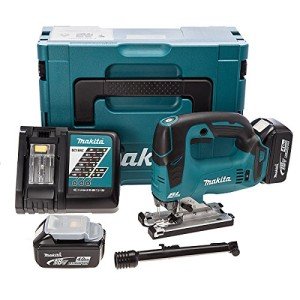
Power Tools Online
Add a review FollowOverview
-
Founded Date July 24, 2022
-
Posted Jobs 0
-
Viewed 73
Company Description
10 Graphics Inspirational About Shop Power Tools
The Workhorse of the Shop Power Tools
Hand-held power tools are powered by internal combustion, electricity, or compressed air. They can be employed to drill, cut, grind or sand materials.
A table saw is among the most important power tools that every woodworker ought to own. It can be used for almost any cutting task. Also consider a miter saw stand as well as a drill/driver kit.
Table Saw
A table saw is the mainstay of the shop power tools and may be the most versatile tool for woodworking. It can cut stock cross-cutting it, miter it, and even dado or rabbet it. It is also able to cut angled surfaces for frames or chests. It can also make planters, chests, or frames.
The circular blade of the saw is huge and spins at a high speed. The table is large which support the stock as it is passing through the blade. The saw blade is protected by a blade guard that helps keep the wood from being caught and possibly kicked back at the operator. The saw is further protected by a splitter or riving blade. This is a vertical extension directly behind the blade, and may be in the shape of pin or fin.
Tablesaws of the contractor style are equipped with a larger motor which is hinged to the rear and drives the blade by using one or two rubber V-belts. These saws are used primarily by carpenters but are also found in the home shop. They come with more features than portable saws, like a sliding miter table.
Smaller table saws have a smaller, lighter-duty motor that is usually belt driven. These saws are geared more toward hobbyists and for domestic use. A lot of them have a sliding miter table which allows the user to create intricate cuts like those for mirror and picture frames, drawers, cases, and boxes.
It is crucial to operate a tablesaw properly to avoid injury. Always remain to the left of the blade when you are making cutting rips and keep your hands clear of the saw’s edge. It is crucial to use an extension stick or a guide block when cutting, particularly in business settings where HSE standards require that you remain at a minimum of one hand’s distance from the blade.
A lot of woodworking projects require tapered legs, and the most efficient and quickest way to cut these is using a tablesaw and a simple adjustable tapering jig that you can build at home. A tapering jig is adjusted for any angle between 15 and 0 degrees, allowing you to cut any set of tapered legs to fit furniture such as tables or cabinets in your shop.
Bandsaw
A bandsaw is a great tool for cutting different shapes out of metal and wood which makes it an essential tool for custom fabrication. It’s also a useful tool for cabinetry, furniture construction, and other woodworking projects. The saw can be used to cut curved cuts including circles and also cut through various materials, including ice.
There are two main types of bandsaws: horizontal and vertical. Vertical bandsaws are generally employed for cutting with freehands and excel at resawing and curved cuts, while horizontal bandsaws are more adept in making straight and cut angles. The saw can be operated manually or with powered feed systems. Manual bandsaws require that the user manually lower and lift the blade after each cut. The powered feed systems are more efficient.
Safety is the top priority when working with a bandsaw. Always wear protective gear, such as safety goggles and ear protection to guard against noise and sawdust. Keep your feet and hands away from the blade to avoid injuries and accidents. It’s also important to set up the saw for safety, making sure that the blade is secured and aligned correctly and that the guides are adjusted.
Depending on the material you’re cutting it might be required to adjust the saw’s speed and feed rate in order to get optimal results. Regular maintenance and adjustments to the blade tension and tracking will ensure that your bandsaw makes accurate and precise cuts while extending its life.
The blade of a bandsaw is made from premium steel that has been heat treated to withstand the strains and fatigue of frequent use. The teeth of the saw are also welded on to give it a unique shape and protecting against damage from a sudden shock.
The throat depth of a bandsaw determines the width of the piece of wood it can cut. The larger throat depths permit you to cut larger pieces of lumber and are useful for resawing and cutting, which are both methods that require cutting across the grain. Some bandsaws have tilting tables that can be used to create angles and to reuse scrap wood.
Dust Collector
Woodworking tools generate chips and dust that need to be gathered to safeguard your health, the shop’s cleanliness and the longevity of your equipment. The type of collector you need depends on the size and number of cheapest power tools online tools you use in your woodshop as well depending on the frequency of their use. The best woodworking dust collectors offer superior filtration that will remove fine particles from the air and allow you to breathe healthier, cleaner and more comfortable while you work.
Nederman offers dust collection systems to meet your requirements, whether you are an individual shop or a large-scale production woodworking facility. Our woodworking dust management, waste management, and combustible-dust solutions combine environmental protection and improvements in the efficiency of machines.
There are many types of woodshop dust collection systems available on the market and include:
A basic dust extractor can replace your shop vac. These units hook up to your power tools via a hose that connects to the dust port on your machine. The hose is activated when you turn on the tool, and it pulls dust and debris out of your workspace.
Depending on the model you select, the majority of dust extractors have HEPA filters to effectively remove dust particles that could cause respiratory problems in the course of time. They also usually come with a higher CFM (cubic feet per minute) airflow, which allows for an increased amount of air. They could also have an airspeed indicator and a system which automatically cleans the air filters.
 If you own a huge shop or wish to be able to use your woodworking tools in the field using a portable dust collector with a rechargeable power source and an integrated connector that connects directly to the power tool is a good alternative. These units are easy to carry and can handle multiple tools at once. They are small and feature a caster-base. They also have a collection filter or bag to make it easy to empty.
If you own a huge shop or wish to be able to use your woodworking tools in the field using a portable dust collector with a rechargeable power source and an integrated connector that connects directly to the power tool is a good alternative. These units are easy to carry and can handle multiple tools at once. They are small and feature a caster-base. They also have a collection filter or bag to make it easy to empty.
If you’re a skilled woodworker, or a contractor, you might require a stronger dust collection system. These units are more costly than extractors, but they offer a wider selection of filtration. They can also be mounted to a wall or in their own room. These units can be used to clean up plaster, drywall and other demolition tasks as well as woodworking projects.
Planer
The planer is a power tool that every woodshop should ever be without. It might not be the most attractive or most flashy but it can make one of the biggest improvements in the ability of turning rough lumber into practical and beautiful projects. It can be used to reduce boards to a certain thickness. It can be used on softwoods as well as hardwoods. It is also useful for working with unwieldy, knotty, or twisted stock which is not possible to handle with hand tools.
A high-quality portable planer can easily be worth the price of admission to any woodworking shop. You might be able to get a bargain on a planer that’s barely used, but you should be attentive to the condition of the cutter head, as well as infeed and outfeed tables. These items will determine the performance of your planer and whether it will last for a long time before you need to replace components. If the cutter head is not of the highest quality, it will wear out quickly and you may have to replace it within the shortest amount of time.
Many people confuse the planer with the jointer, however they are not the same machine. The jointer creates a board straight and flat, while the plane cuts it to a specified thickness. Some woodworkers utilize both machines simultaneously to complete the task. But, they’re both essential for any workshop handling rough lumber on a regular basis.
A commercial-grade planer is a great investment if you want to do professional woodworking and want quality equipment. These machines are designed to be used in situations where the speed of production is more important than surface finish. These machines can save you a amount of time, however you should be cautious not to overload them. They could be able to burn out. To ensure that they continue functioning properly, you’ll need to maintain them properly. A good shop maintenance routine will go a long way toward extending the life of your planer.
